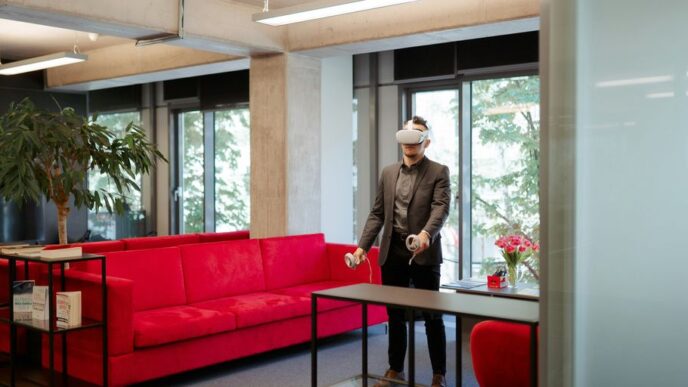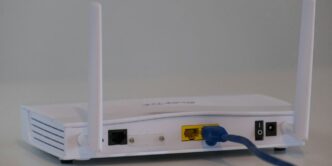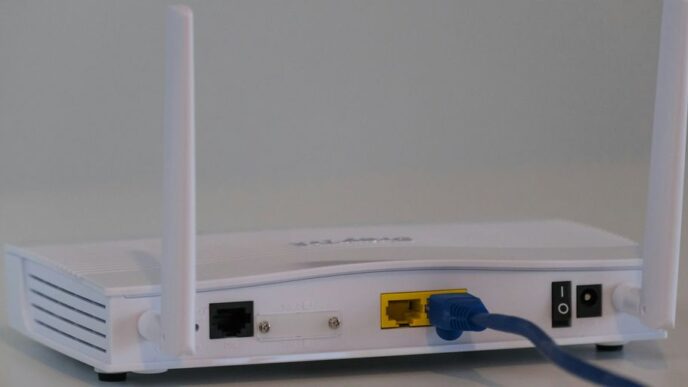Communication is the backbone of any successful organization. From internal team discussions to client meetings, effective communication channels keep everything running smoothly. In today’s digital age, technology has revolutionized how we communicate with one another. Gone are the days of pagers and landlines; now we have a myriad of IT-based options at our fingertips! Join us as we explore the different forms of IT-based communication – from emails and instant messaging to video conferencing- and their unique advantages in bridging geographical barriers. Get ready to take your organizational discussions up a notch!
Overview of IT Communication
Communication is the key to any successful relationship, whether it is personal or professional. The ability to effectively communicate with others can help to foster understanding, build rapport, and create a more positive work environment.
There are many different forms of communication, and each has its own advantages and disadvantages. Here is an overview of some of the most common types of IT-based communication:
Email: Email is a convenient way to send and receive written messages without having to meet in person. However, it can be easy for emails to get lost in a crowded inbox, and there is no guarantee that the recipient will read them right away.
Instant messaging: Instant messaging (IM) apps like Slack or WhatsApp provide a quick way to exchange short messages with colleagues or friends. IM can be helpful for getting quick answers to simple questions, but it can be disruptive if used excessively.
Video conferencing: Video conferencing tools like Zoom or Skype allow people to see and hear each other in real-time from different locations. This can be helpful for building relationships and Facilitating collaborative work. However, video conferencing can also be expensive and time-consuming to set up.
Different Types of IT Communication
In today’s business world, there is a lot of emphasis placed on communication. In order to be successful, it is important to be able to communicate effectively with clients, customers, and employees. One way that businesses can improve communication is by using IT-based communication tools. There are a variety of different IT communication tools available, and each has its own set of advantages and disadvantages.
Email is one of the most commonly used IT communication tools. Email is quick and easy to use, and it allows businesses to communicate with large groups of people at once. However, email can also be easily misused or misinterpreted, which can lead to misunderstandings or conflict.
Video conferencing is another popular form of IT-based communication. Video conferencing allows businesses to hold virtual meetings or conferences with employees or clients who are located in different places. This type ofcommunication can be very effective for holding presentations or training sessions. However, video conferencing can also be expensive and requires a good internet connection.
Instant messaging (IM) is a newer form of IT-based communication that is becoming increasingly popular in the business world. IM allows businesses to communicate in real-time with employees or customers who are online. IM is typically less formal than email or video conferencing, which can make it more comfortable for some people to use. However, instant messages can also be easily misused or misinterpreted.

Benefits and Drawbacks of IT Communication
There are many benefits to IT-based communication, including increased efficiency and convenience. However, there are also some drawbacks, such as the potential for miscommunication and the reliance on technology.
IT-based communication can be very efficient, as it can allow for quick and easy communication between parties. It can also be convenient, as it can be done from anywhere with an internet connection. However, there are also some drawbacks to IT-based communication. One of the biggest potential problems is miscommunication, as it can be easy to misunderstand or misinterpret what someone is trying to say when communicating via text or video chat.
Additionally, IT-based communication can be unreliable if there are technical difficulties, such as a bad internet connection. IT-based communication is reliant on technology, which means that if something happens to the technology (e.g., the power goes out), then communication will not be possible.
Security Considerations for Using IT Communication
When communicating via email or any other form of IT-based communication, it is important to be aware of the potential security risks. Here are some things to keep in mind:
- always use a secure connection (https://) when sending or receiving sensitive information;
- ensure that your computer is free of malware and viruses before sending or opening any files;
- avoid clicking on links in emails or instant messages from unknown senders;
- never give out your password or other personal information in response to an unsolicited request; and
- report any suspicious activity or communications to your IT department or security team.
Examples of Effective IT Communications Techniques
When it comes to communication in the IT world, there are a variety of different techniques that can be employed in order to effectively get your point across. Here are some examples of effective IT communications techniques:
- E-mail: E-mail is still one of the most popular forms of communication within the IT world, and for good reason. It is quick, efficient, and can easily be accessed from anywhere in the world. When sending an e-mail, be sure to keep it clear and concise so that your recipient can easily understand your message.
- Video conferencing: With video conferencing, you can easily communicate with others regardless of location. This is a great option for meetings or presentations where visuals are important.
- Online chat: Online chat is another popular option for IT professionals who need to communicate quickly and efficiently. This option allows for real-time communication so that you can get your point across right away.
- Phone calls: Although not as popular as some of the other options on this list, phone calls can still be an effective form of communication within the IT world. This option allows for a more personal touch and can be great for building relationships with clients or colleagues.
Strategies to Improve the Effectiveness of IT Communications
There are a number of strategies that can be employed to improve the effectiveness of IT-based communication. One key strategy is to ensure that messages are clear and concise. This can be achieved by using plain language and avoiding jargon.
Another strategy is to use multimedia content to convey messages, as this can help to engage employees and make complex information more understandable. Additionally, it is important to consider the different channels of communication available and select those that are most appropriate for the message being conveyed. For example, emails may be better suited for short, factual messages, while video conferencing may be more effective for longer, more complex conversations. Regular feedback should be sought from employees to ensure that communications are effective and meet their needs.
Conclusion
IT-based communication has come a long way in the past few decades and it continues to evolve with each passing day. It is becoming increasingly easy to communicate with colleagues and clients quickly, conveniently, and inexpensively without having to be present physically. Whether you are looking for simple emails or more complex video conferencing applications, there is an IT-based communication solution tailored to your needs. Research the different options out there carefully before selecting one that makes sense for your team’s needs so that you can enjoy convenient communication every step of the way.













